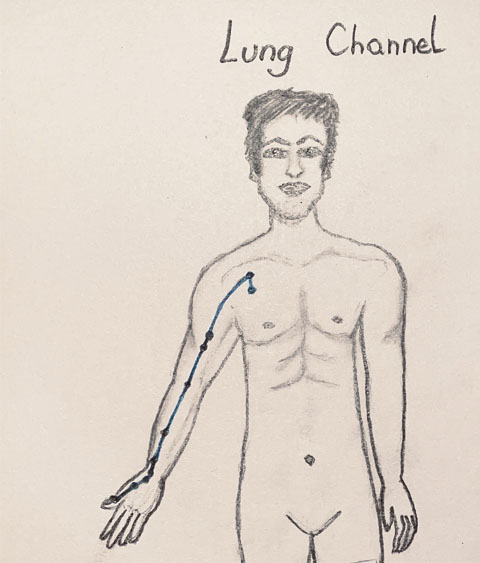
Lung Meridian

Overview
- Anatomically the lungs are a set of large, roughly cone-shaped organs that are situated in the chest behind the rib cage. Each lung has a different shape and size. The right lung is wider, shorter, and larger in volume than the left.
- In conventional medicine the lungs are the major organ of the respiratory system. Together, they are responsible for exchanging oxygen and carbon dioxide with air from the atmosphere. As we breathe in, the lungs expand and oxygen is taken in from the air. Carbon dioxide is then pushed back out when we exhale as the lungs compress.
- In functional medicine Lung Meridian has various specific jobs:
- It controls the immune system
- It regulates water metabolism
- It governs Qi and respiration
- It regulates Qi in all meridians
- It controls skin and body hair growth and repair
Benefits of stimulation
Exercises that stimulate the shoulder and inner arm help with:
- Diaphragmatic tightness
- Carpal tunnel syndrome
- Shortness of breath, spontaneous sweating, bronchitis, asthma, chest tightness and palpitations
- Shoulder stiffness
- Blood thickening
- Menstrual cramps
- Fatigue
- Loose stools
Lung Channel exercises and stimulation target respiratory conditions accumulated through lifestyle choices and environmental factors.
Aggravates the Channel
Pollution, allergies, infections of respiratory tract, grief and sadness as continuously stored and suppressed emotions.
Nourishes the Channel
Consumption of “white” foods such as daikon radish, cauliflower, parsnip, potatoes, garlic, rice, oats etc.
Breath exercises/Pranayam
Cardio workout
Meditation, Qigong, TaiQi
Acupuncture/Acupressure/Tapping
Walks in nature
Sources